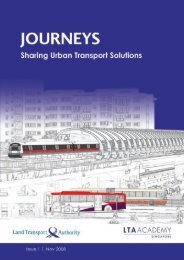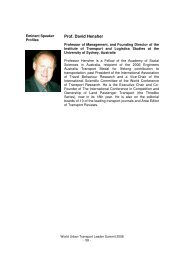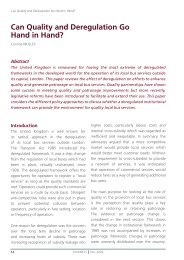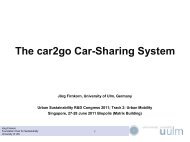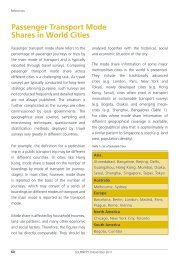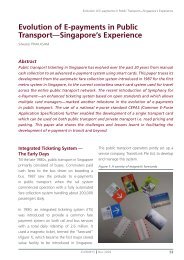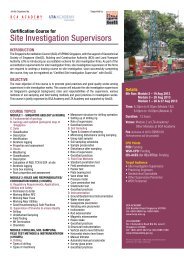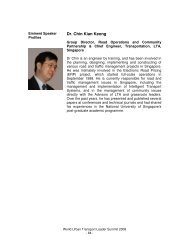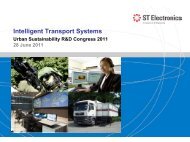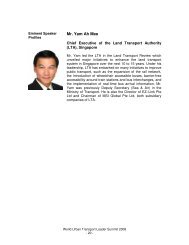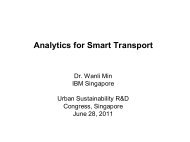Full Version - Issue 7 | November 2011 - LTA Academy
Full Version - Issue 7 | November 2011 - LTA Academy
Full Version - Issue 7 | November 2011 - LTA Academy
Create successful ePaper yourself
Turn your PDF publications into a flip-book with our unique Google optimized e-Paper software.
Mohinder Singh<br />
Dean<br />
<strong>LTA</strong> <strong>Academy</strong><br />
A<br />
s we publish yet another issue<br />
of JOURNEYS, the contributions<br />
of our authors attest to the<br />
fact that matters relating to urban and<br />
transport planning continue to challenge<br />
governments, policy makers and societies all<br />
over the world. It is clear that great minds<br />
are kept busy with ideas and concepts on<br />
how to move people, goods and services in<br />
the best possible way. The issue is getting<br />
more complex with greater urbanisation in<br />
every country, and as the global village gets<br />
smaller, as more people want or need to<br />
travel or transport things. Yet, rising to the<br />
challenge, urban and transport planners<br />
are unstinting in their efforts to make<br />
improvements and chart the way forward.<br />
Professor KW Axhausen and Alex Erath<br />
from ETH Zurich (Swiss Federal Institute of<br />
Technology Zurich) give a glimpse of the<br />
research on Mobility and Transportation at<br />
the Future Cities Laboratory. The goal is to<br />
derive tools to manage, plan and optimise<br />
the flow of people and goods at different<br />
Dean’s Words<br />
time scales and in their interactions with all<br />
elements of the future city. The project has<br />
both medium and long-term perspectives.<br />
The authors say that the integration of the<br />
medium and long term horizons in the<br />
research is a significant methodological<br />
innovation that will enable a global analysis<br />
of complex issues related to mobility in the<br />
future.<br />
From Mott MacDonald, Damian Price<br />
and Amy Leather explore what is still<br />
considered a relatively new element of the<br />
transport practitioner’s toolbox, Transport<br />
Mobility Management (TMM). They present<br />
examples of international best practices in<br />
TMM and examine the degrees of success.<br />
They have found that the more successful<br />
TMM initiatives are those embedded in the<br />
wider transport approach of a government,<br />
authority or service provider. The authors<br />
have even distilled the Top Ten Measures for<br />
success in TMM to share with our readers.<br />
Collaborating at the <strong>LTA</strong> <strong>Academy</strong>, Professor<br />
David Hensher and Gabriel Wong examine<br />
the different approaches to the provision<br />
of public transport in various cities around<br />
the world. These approaches include<br />
government operation, competition in the<br />
market, government regulation of fares<br />
and services, competitive tendering, and<br />
negotiated performance-based contracts.<br />
What emerges is that there is no one-size fits<br />
JOURNEYS | <strong>November</strong> <strong>2011</strong><br />
5



